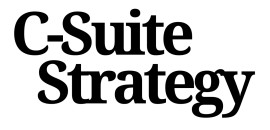
Understanding the space auto dashboard advantage
Why Modern Dashboards Matter for Executives
In today’s fast-paced business environment, the executive dashboard is no longer just a digital accessory—it’s a strategic command center. Drawing inspiration from the precision of a car dashboard or even the advanced controls found in an astronaut’s interior, modern space auto dashboards bring clarity and focus to the C-suite. These dashboards are designed to be more than just visually appealing; their aesthetic and product design directly impact how leaders interact with data and make decisions.
Just as a car interior blends functionality with style, the best dashboards offer a seamless user experience. Executives can customize their dash with accessories that fit their unique needs, from real-time performance metrics to privacy policy notifications. The right dashboard accessories help declutter the interface, ensuring that only the most relevant information is front and center. This approach mirrors the way car decoration and interior dashboard accessories can transform a vehicle’s look and feel, making the space both easy and convenient to use.
- Clarity over clutter: Top dashboards filter out noise, letting leaders focus on what matters most.
- Design meets function: A well-designed dashboard is as much about the user experience as it is about data.
- Customization: From astronaut car themes to minimalist layouts, executives can personalize their dashboard to match their leadership style.
When evaluating dashboard products, price and ease of use are important, but so is the ability to integrate with existing systems and support cross-functional collaboration. The best solutions offer a free trial or demo, allowing leaders to test how the dashboard fits within their car interior of decision-making. This focus on design and usability is essential for driving adoption and ensuring the dashboard becomes a trusted item in the executive toolkit.
For more on how digital transformation is influencing dashboard design and executive decision-making, explore this insightful guide on navigating the era of digital transformation.
Ultimately, the modern executive dashboard is not just a decoration car accessory—it’s a strategic asset that empowers leaders to steer their organizations with confidence, agility, and vision.
Aligning dashboard metrics with strategic objectives
Translating Strategic Goals into Actionable Dashboard Metrics
Space auto dashboards are changing how executives connect high-level strategy with daily operations. The challenge is not just about collecting data but ensuring that every metric displayed on the dashboard directly supports your company’s strategic objectives. When you sit in the car interior, the dashboard is more than a design element or an accessory; it’s the command center. The same principle applies to executive dashboards—every item and accessory on the dash should serve a purpose. To align dashboard metrics with your strategic goals:- Prioritize relevance: Select metrics that reflect your top business priorities. Avoid cluttering the dashboard with data that doesn’t drive action or insight. The best dashboards, like the most functional car interiors, are free from unnecessary decoration or accessories.
- Balance aesthetics and function: A well-designed dashboard is easy to read and convenient to use. The aesthetic should support quick decision-making, just as a car dashboard’s layout helps drivers stay focused. Consider the placement of each metric, much like choosing the right spot for a phone holder or astronaut car decoration—every detail matters.
- Ensure cross-functional input: Involve leaders from across the business to identify which metrics matter most. This helps avoid a narrow focus and ensures the dashboard reflects the full scope of your company’s strategy, similar to how a car’s interior dashboard integrates multiple controls and accessories for a seamless driving experience.
Driving agility through real-time insights
Real-time insights for faster, smarter decisions
The modern car dashboard has evolved far beyond a simple display of speed or fuel. In the same way, executive dashboards inspired by space auto design principles are transforming how leaders make decisions. These dashboards deliver real-time data, allowing executives to respond quickly to changing business conditions. This agility is essential for staying ahead in today’s fast-paced markets. A well-designed dashboard, much like the interior of a top-tier astronaut car, brings together essential metrics and insights in one convenient place. This approach reduces the need to sift through endless reports or switch between multiple platforms. Instead, leaders can focus on what matters most, using a single, easy-to-navigate interface that mirrors the efficiency of a car interior built for performance and comfort.- Immediate visibility: Real-time dashboards provide instant access to key performance indicators, helping executives identify trends and issues as they emerge.
- Enhanced collaboration: Cross-functional teams can align quickly, using shared data to drive unified action.
- Customization: Like choosing the right dashboard accessories or car decoration, executives can tailor their dashboards to highlight the metrics that align with strategic objectives.
All rights reserved. For more information, please review our privacy policy.
Overcoming data overload and focusing on what matters
Filtering Signals from Noise in the Dashboard
Executives today face a constant stream of data from every corner of the business. With the rise of space auto dashboards, the challenge is no longer access to information, but rather knowing which metrics truly matter. The car dashboard analogy is fitting: just as a driver relies on a few key gauges to navigate safely, leaders must identify the most relevant indicators to steer the organization.
- Prioritize actionable metrics: Not every data point deserves equal attention. Focus on metrics that directly impact strategic objectives and performance. This approach helps avoid dashboard overload and ensures the interior dashboard remains clear and purposeful.
- Design for clarity and relevance: The aesthetic and design of the dashboard should highlight top priorities. Use visual cues and accessories dashboard elements to draw attention to critical areas, much like the best car interior accessories enhance usability without clutter.
- Leverage customization: Allowing executives to personalize their dashboard—choosing which items, widgets, or data streams to display—makes the experience more convenient and easy to use. This mirrors how astronaut car accessories or interior car decoration can be tailored for both function and style.
When dashboards are overloaded, decision-makers risk missing vital signals. By focusing on what matters, leaders can ensure their car dashboard—whether literal or digital—remains a tool for clarity, not confusion. The right product design, from the dash layout to the placement of dashboard accessories, supports this goal. Ultimately, a well-designed dashboard is not just about decoration car trends or the latest accessories car item; it’s about empowering executives to make informed decisions, free from distraction.
For organizations, this means continuously reviewing which metrics are displayed, ensuring privacy policy compliance, and respecting rights reserved for proprietary data. The result is a dashboard that supports both strategic vision and operational agility, keeping the executive team focused on what drives value.
Integrating cross-functional perspectives
Bringing Every Perspective to the Dashboard
Space auto dashboards are not just about displaying numbers—they are about connecting the dots across your organization. When designing a dashboard for the car interior or astronaut car environments, it is crucial to ensure that every function, from operations to marketing, has a voice in what is measured and displayed. This approach helps avoid the common pitfall of siloed data and ensures that the dashboard accessories and metrics reflect the full scope of your business.- Unified View: By integrating cross-functional data, the dashboard becomes a single source of truth. This means that product teams, finance, and operations all see the same real-time insights, reducing confusion and aligning efforts.
- Relevant Metrics: Not every item or accessory needs to be tracked. Focus on the metrics that matter most to your strategic objectives, whether it is the top-performing product, price trends, or customer engagement with new dashboard accessories.
- Design for Usability: The aesthetic and design of the dashboard should make it easy and convenient for any executive to find what they need. Consider the placement of widgets, the touch interface, and how the dashboard fits within the overall car interior or astronaut environment.
Making Collaboration Easy and Effective
A well-designed dashboard encourages collaboration. When every department can access and interpret the same data, it is easier to make informed decisions about car decoration, accessories dashboard, or even privacy policy compliance. This shared understanding supports a culture of transparency and continuous improvement.- Encourage feedback from all users to refine dashboard features and decoration car elements.
- Ensure that the dashboard supports both high-level overviews and detailed drill-downs for specific accessories car or product performance.
- Leverage the dashboard as a platform for sharing best practices and aligning on strategic goals across the company.
Ensuring adoption and continuous improvement
Building a Culture of Dashboard Engagement
To ensure that space auto dashboards deliver sustained value, executive teams must focus on more than just the initial rollout. True impact comes from fostering a culture where the dashboard becomes a natural extension of daily decision-making. This means making the dashboard as easy and convenient to use as any essential car accessory, seamlessly fitting into the executive's workflow—much like how a well-designed car interior or astronaut car dashboard enhances the driving experience. A few practical steps can help drive adoption and continuous improvement:- Prioritize intuitive design: The dashboard interface should be as user-friendly as the top car dashboard accessories, with clear navigation and a touch of aesthetic appeal. A clutter-free layout ensures executives can focus on what matters, avoiding data overload and making the most of their limited time.
- Encourage feedback loops: Regularly gather input from users across functions. This mirrors how car interior accessories are refined based on driver feedback, ensuring the dashboard evolves to meet changing needs and preferences.
- Integrate with daily tools: Make the dashboard accessible from any device—phone, tablet, or desktop—so executives can check insights on the go, whether they're in the office or reviewing strategy from their car interior.
- Highlight value through quick wins: Showcase how the dashboard helps solve real business challenges. For example, demonstrate how a new product launch or pricing strategy can be tracked in real time, much like monitoring the performance of a new car dash accessory.
- Maintain privacy and compliance: Ensure that all data displayed respects privacy policy requirements and that rights reserved are clearly communicated, building trust and authority in the dashboard as a secure business tool.














